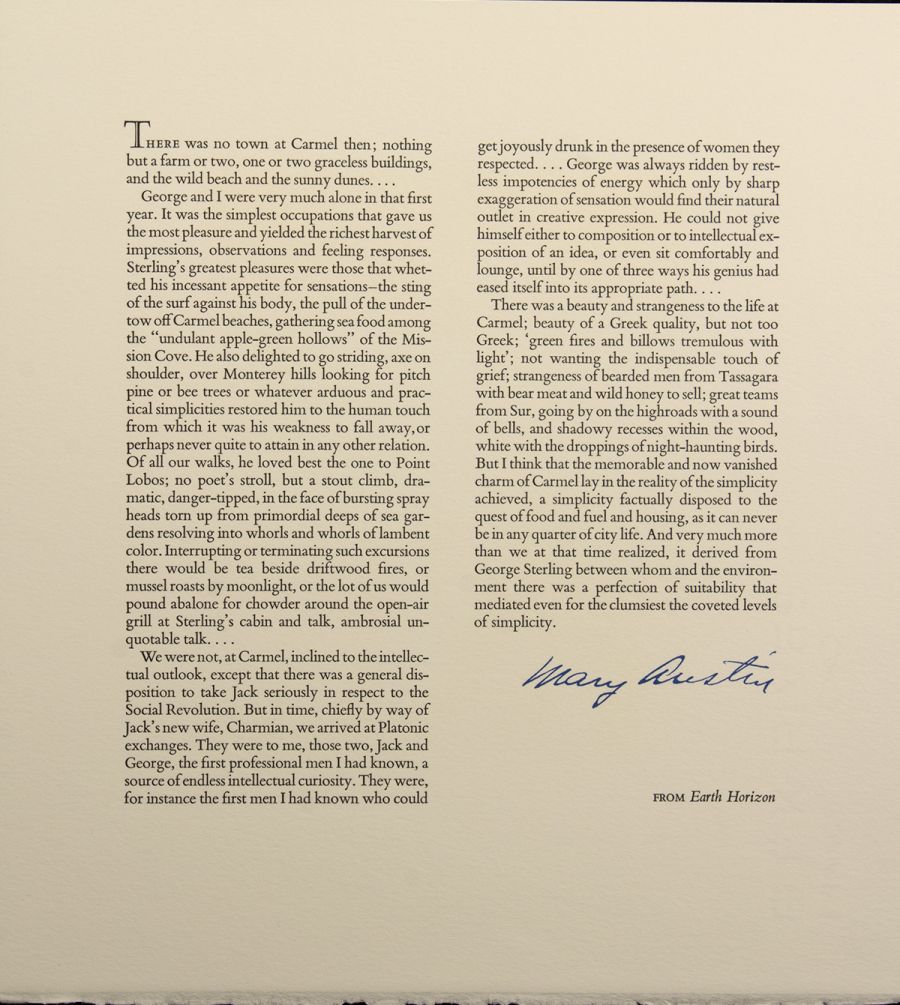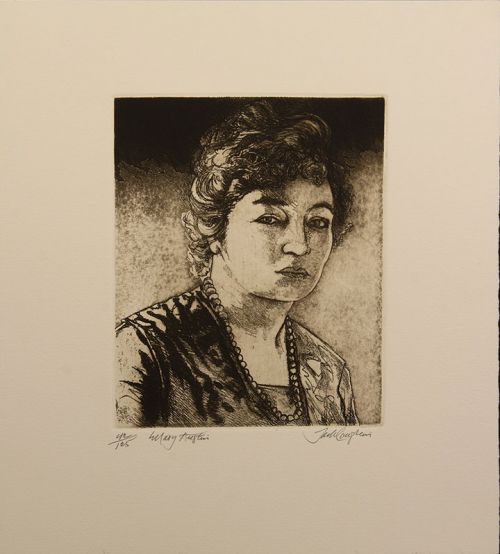#MuseumsFromHome: Bohemia
From the exhibition IMPRESSIONS OF BOHEMIA
Historically, Bohemia has referred to the land and people that inhabit what is now the Czech Republic, but the term first rose to prominence in the English language in the 19th century to describe the unconventional lifestyles of impoverished artists, writers, journalists, musicians, and actors in European and American cities. Bohemian became synonymous in American culture with journalists, and, with the outbreak of the Civil War (1861-1865), specifically war correspondents. In 1861, San Francisco journalist Bret Harte began writing as “The Bohemian,” and San Francisco became known as the “Bohemia of the West.” In 1872, when a group of San Francisco journalists and artists who gathered regularly were searching for a name, bohemian was the top contender, and so The Bohemian Club was born.
When the earthquake of 1906 decimated San Francisco, much of the artistic community fled the city. Many of them came to the Monterey Peninsula, which since the late nineteenth century had attracted artists of all types who were eager to capture the essence of the dramatic shoreline. The area comprises the cities of Monterey, Carmel, and Pacific Grove, as well as Point Lobos and parts of Big Sur, which is considered the longest and most scenic stretch of coastline in the contiguous United States. Founded in 1770, Monterey was the capital of California under both Spanish and Mexican rule. The first U.S. flag raised in the new state of California was in Monterey. It was home to the first theater, first library, first public school, and first newspaper in California, as well as being a major port and supporting a strong fishing industry until the 1950s. Carmel was founded in 1902 and has come to be known as an artistic community, home to many who embraced the unconventional Bohemian lifestyle. Following the 1906 San Francisco earthquake, writers, musicians, painters, and other artists who fled to Carmel were offered home lots for $10 down with little to no interest and whatever they could pay monthly. With this mass migration, Bohemia had shifted approximately 120 miles south from San Francisco to the Monterey Peninsula.
The portfolio Impressions of Bohemia was conceived by the artist Jack Coughlin as a way to feature literary figures and photographers who resided in the Monterey-Carmel-Big Sur area at some point in their lives. The subjects of the etchings on exhibition, which will be introduced in FAM's social media and on this page weekly starting in mid-July 2020, may include and of the following: Ansel Adams, Gertrude Atherton, Mary Austin, Robinson Jeffers, Sinclair Lewis, Lincoln Steffens, John Steinbeck, George Sterling, Robert Louis Stevenson, and Edward Weston.
|
© Jack Coughlin, Ansel Adams, from Impressions of Bohemia series, 1986, Etching 42/125, Gift of James and Barbara Johnson, FAM94.48.11a |
ANSEL ADAMS Famed photographer Ansel Adams was born February 20, 1902 in San Francisco. He was a landscape photographer best known for his black and white images of the American West. Adams was given his first camera when he was 12 years old, during a family trip to Yosemite. He developed his early work as a member of the Sierra Club, beginning in 1922, and later contracted with the Department of the Interior to create photographs of the National Parks. In 1924, he participated in a group exhibition with Imogen Cunningham and Edward Weston at the de Young Museum in San Francisco. They formed Group f/64 which promoted pure photography over pictorialism. Adams was also a friend to Mary Austin and Robinson Jeffers. He helped establish the photography department at MOMA. In 1965, Adams moved to the Carmel Highlands along the Big Sur coastline. He was awarded the Medal of Freedom in 1980. Adams passed away in Monterey on April 22, 1984. He is considered one of the most influential photographers of the 20th century. |
When was the last time you heard of $10 for an ocean view?
Following the 1906 San Francisco earthquake, writers, musicians, painters, and other artists who fled to Carmel were offered home lots for $10 down with little to no interest and whatever they could pay monthly. Mary Austin was one of the writers who ended up there. In her autobiography, Earth Horizon, Austin described Carmel as “nothing but a farm or two, one or two graceless buildings and the wild beach and the sunny dunes....”
|
© Jack Coughlin, Mary Austin, from Impressions of Bohemia series, 1986, Etching 42/125, Gift of James and Barbara Johnson, FAM94.48.11a |
MARY AUSTIN Jack Coughlin featured an etching of the prolific novelist, poet, critic, and playwright Mary Austin in his Impressions of Bohemia portfolio. Austin was from Carlinville, Illinois, then moved with her family to California and established a homestead in the San Joaquin Valley. She moved to Carmel around 1906 or 1907 without her husband and was involved in all aspects of Carmel’s bohemian society. Austin was one of the founders of the famed Forest Theater, and after settling in New Mexico in 1924, she co-authored a book with fellow bohemian Ansel Adams. An excerpt from Mary Austin’s autobiography is included in the portfolio and provides a glimpse into her bohemian lifestyle. Scroll down to read it. |


